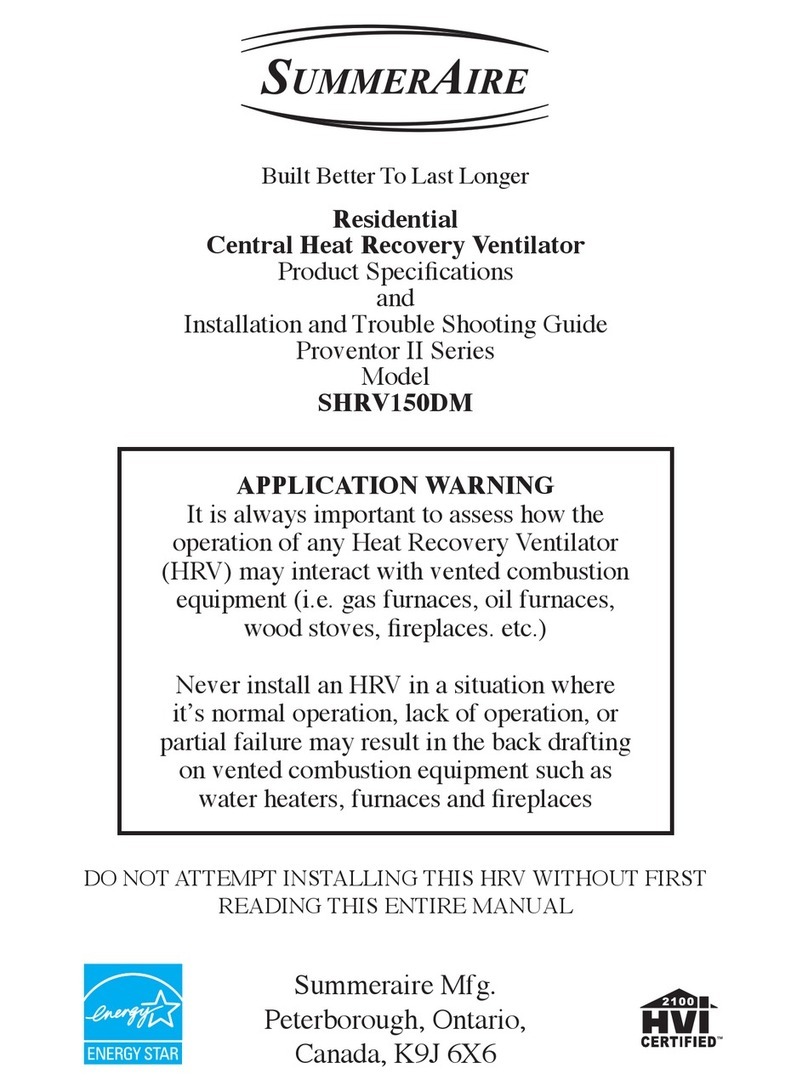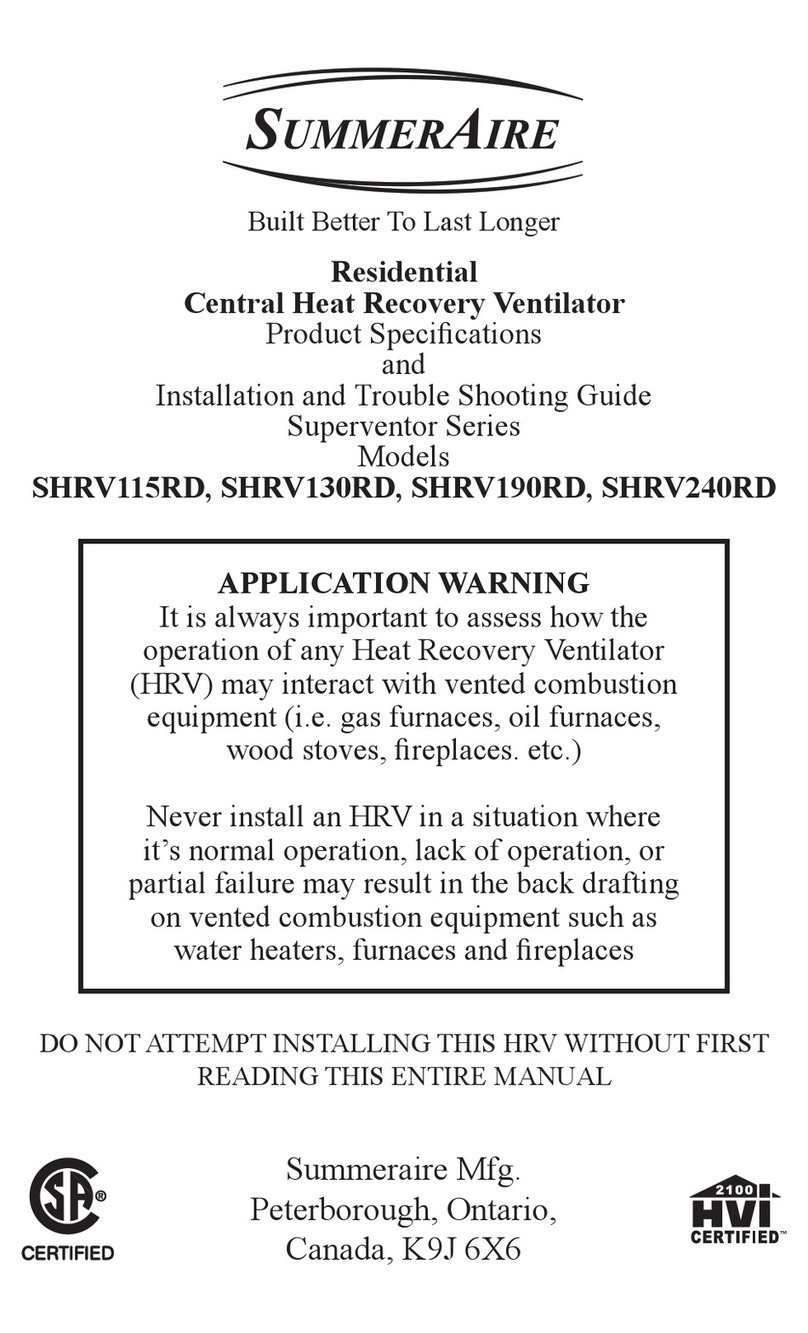4
MODELS AVAILABLE:
230/1/60 single speed 1 H.P.
208/230/460/575 3 phase single speed 1 H.P. and 2 H.P
Refer to Model selection table for capacities available.
MOTORS: Type ODP motors with sleeve bearings or fan cooled with ball
bearings depending on application. Available in 1hp or 2hp in various voltages
and phases including 208/230/460/575 3 phase and 230/1 phase..
CABINET:Cabinet is white powder coated 18ga. Galvanized with 2” foil
faced reinforced insulation. Includes six (6) Access Doors to service air filters,
drain pans, heat recovery cores and fan and motor assemblies.
HEAT RECOVERY CORE: Three (3) polypropylene cores located for easy
removal for cleaning.
BLOWERS: Belt Drive, double inlet, forward curved centrifugal
blowers.Painted housing and galvanized wheels.
FILTERS: Four (4) - 16 “ X 20 “ X 4 “ Pleated Disposable Air Filters
DEFROST: Damper defrost system is actuated when supply air temperature
entering HRV falls below preset temperature. This causes cold supply air to be
dampened off thereby passing ambient indoor air from the building over the
core for a 5-7 minute cycle until the core defrosts.
CONTROLS: Power On/Off is field supplied as a fused disconnect. Control
keypad on the unit gives several options including; Hi420 20 minutes of run
time on high speed, Intermittent ventilation repeating cycle of 20 minutes of
fan on followed by 40 minutes of fan off, Auto Off to put the unit into standby
off mode until activated to high speed ventilation by a remote device or a
Remote Push Button or Crank Timer. Standby mode, power to the main control
remains on but the Remote Devices are inactive, cold supply damper closes.
OPTIONAL REMOTE CONTROLS: Remote On/Off toggle switch, Crank
timers, Remote 20 minute Push Buttons (Maximum 6) and Dehumidistats.
CONDENSATION: Unit supplied with Drain Spigots and a Tee fitting. Drain
hose (5/8 inside diameter) to be field supplied.
MOUNTING: Indoor application only, fasten at four corners of unit using
field supplied threaded rod for ceiling suspension
SHIPPING WEIGHT: 750 pounds
NOTE: ALL WIRING MUST BE IN COMPLIANCE WITH ALL
NATIONAL – STATE – PROVINCIAL AND LOCAL CODES





























